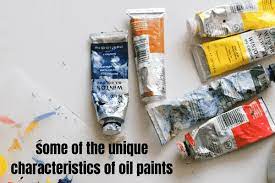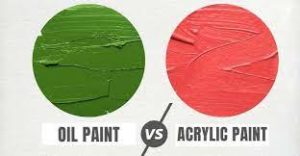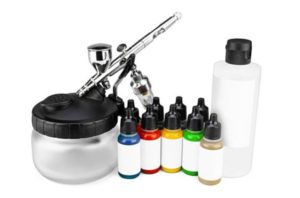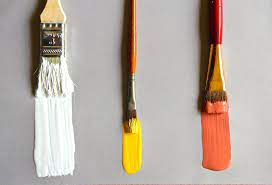
Acrylic Vs Oil Paint: How to Choose Your Artistic Medium
The first step in beginning your art journey is to choose a painting medium to express your creativity. Acrylic and oil paints are two of the most loved mediums, and each has unique advantages and appeal. So, is oil paint better to use with acrylic paint? Let’s delve into the intriguing realm of painting and examine the distinctions, benefits, and factors to take into account between these two media so you can make an informed choice.
Let’s dive into the realm of acrylic paint, where imagination has no limitations and colors come alive with a brushstroke.
Key features of oil Paint and acrylic paint
Acrylic Paint: 
- Versatility; Acrylic paint is a versatile and convenient water-based medium. It was invented in the middle of the 20th century, making it more recent in time than oil paint. Following are the key features:
- Drying time: Acrylic paints dry quickly, frequently in just a few minutes to an hour. For painters who prefer to work on numerous layers in a single session or who need a quicker turnaround, this quick drying time is a big benefit.
- Brushes: The Paint brushes and tools used for acrylics and oils can be used interchangeably, but they need to be thoroughly cleaned to prevent mixing the two media.
Acrylics are a great option for artists who want to preserve the original brilliance of their work because they retain their vibrant color and do not yellow with time. Their methodological diversity allows for fine washes, thick impasto layers, and all in between.
Related Articles : A Complete Guide on Difference Between Acrylic Paints and Oil Paints
Oil Paint: The Timeless Classic

- Drying Time: Oil paints require a lot longer to cure than acrylic paints, which may be both a benefit and a drawback. It is perfect for intricate and complex paintings because of the delayed drying time, which enables blending and reworking. But it might also call for endurance.
- Richness of Color: No other medium compares to the depth and richness of color that oil paints provide. The hues are more subdued and brilliant, and they can be stacked and combined for a more subtle effect.
- Archival Quality: Oil paints tend to age well and have excellent archival qualities. They won’t yellow or crack over time, ensuring your work remains vibrant for generations.
- Solvents: Oil paints require the use of solvents for cleaning brushes and thinning paint, which can pose health and environmental concerns. Proper ventilation and the use of safer solvents can mitigate these issues.
Related Articles : What Research Says About Oil Paint
Choosing between Acrylic and Oil Paint:

Oil paints require more skill and patience, making them a better choice for more experienced artists.
The choice between oil and acrylic paint ultimately boils down to your goals, working techniques, and artistic individual tastes. Considerations to make include the following:
- Time Spent Drying: If layer building and working quickly is more your style, acrylics might be a better
- choice. But oil paints allow you more freedom if you relish the blending and reworking process.
- Color Vibrancy: Acrylics are a better option if you want your colors to stay as vibrant as they are on your palette. Some artists are drawn to the distinctive depth and luminosity that oil paints offer.
- Experience Level: Because acrylics are so easy to use and forgiving, they are frequently suggested for beginners. Oil paints are better suited for more seasoned artists because they require more patience and skill.
- Subject Matter: The subject you want to paint may also influence your decision. Oils are superior at capturing the details of still life and portraits, while acrylics work well on a broad variety of subjects.
- Budget: Compared to oil paints, acrylic paints are frequently less expensive. Acrylics are an affordable way to explore your creativity if you’re on a tight budget.
- Workspace: When deciding between acrylics and oils, take into account your workspace and any possible ventilation restrictions. For enclosed spaces, acrylics are a safer option.
Related Articles : Best Tips and Techniques for Perfecting the Art of Oil Paint Thinness
The Finest of Both Worlds with Hybrid Approaches
The most loved approach by artists is to use a combination of oil and acrylic paint. By using this technique, you can minimize the negative aspects of each medium while still maximizing its positive aspects. To establish the composition, for instance, you could begin with an acrylic underpainting and use oil paint for the final layers, utilizing the oil’s ability to blend colors well and provide depth of color.
Conclusion
The decision between oil and acrylic paints is a journey of discovery in the exciting world of art. Imagine acrylics as your flexible, daring partner, drying quickly and prepared for quick creations. On the other hand, oil paints provide a timeless and patient companion that is ideal for creating rich, blended masterpieces. Your choice will depend on your artistic goal: the easy, adaptable acrylic express or the classic beauty of oil’s purposeful charm. In the end, it’s up to you to decide how to use your brush and how to create your masterpiece, with each stroke serving as a step along your individual creative path.
FAQS
Which kind of paint lasts longer and is more resilient?
Acrylic paint typically isn’t as strong or long-lasting as oil paint. Oil paintings are less likely to break and turn yellow with time due to their slow drying process and the creation of a flexible, stable film. Although the longevity of acrylics has increased, oil paintings have a historical record of lasting for centuries when properly cared for.
How should I take care of and store my acrylic and oil paints?
Your oil and acrylic paints should be stored and maintained in a cool, dry location with their lids securely closed to avoid drying out. Keep them out of direct sunlight and sudden temperature changes. To prolong the life of brushes, thoroughly clean them after every use. Get rid of waste products ethically and correctly. Because some solvents can be toxic, use caution when handling them and make sure you have enough ventilation when using oil paints.
Which one is simpler to use for beginners: acrylic or oil?
In general, acrylic paint is thought to be simpler for beginners. It dries quickly, making layering and editing simple. Water is less toxic and makes cleanup easy. Conversely, oil paint dries more slowly and necessitates the use of solvents for cleaning, which can be more difficult for novices. But some people might prefer the blend-ability and workability of oil paint, so in the end, personal preferences and objectives will determine the decision.







